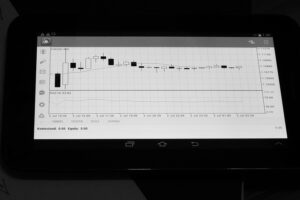Demystifying Digestion: The Essential Digestive System Diagram Explained
Introduction
The human digestive system is a marvel of biological engineering, designed to break down food, absorb nutrients, and eliminate waste. To truly understand the intricate workings of digestion, it is essential to dissect the components of the digestive system. This article aims to demystify digestion through a comprehensive exploration of the digestive system diagram, breaking down each part and its function while incorporating modern studies and findings [modern_footnote_source].
The Digestive System: An Overview
The digestive system is a complex network involving various organs and structures. It comprises the gastrointestinal (GI) tract and accessory organs. The GI tract is a continuous tube that runs from the mouth to the anus, including several key organs: the mouth, esophagus, stomach, small intestine, large intestine, and anus. Accessory organs include the salivary glands, liver, gallbladder, and pancreas, which play crucial roles in digestion but are not part of the GI tract.
The Digestive Process
The process of digestion is a multifaceted journey that begins even before food enters the mouth. Digestive processes can be categorized into four primary stages: ingestion, digestion, absorption, and elimination.
-
Ingestion: The act of consuming food involves not just mechanical actions such as chewing, but also the initiation of enzymatic activity in saliva.
-
Digestion: This stage can be divided into mechanical and chemical digestion. Mechanical digestion includes physical actions like chewing and grinding, while chemical digestion involves enzymes breaking down food into smaller molecules.
-
Absorption: Once food is broken down into its basic components, nutrients are absorbed through the walls of the intestines into the bloodstream.
- Elimination: Finally, waste products are expelled from the body. This stage is crucial for maintaining overall health.
Understanding the Digestive System Diagram
To delve deeper, let’s break down the essential components represented in the digestive system diagram.
1. The Mouth
The journey of food begins in the mouth, where mechanical digestion occurs through chewing. Saliva, produced by salivary glands, contains enzymes like amylase, which begins the breakdown of carbohydrates.
Diagram Explanation: The mouth is depicted as the entry point. Salivary glands are shown adjacent to the oral cavity, indicating their role in digestion.
2. The Esophagus
Once food is ingested, it travels down the esophagus, a muscular tube connecting the throat to the stomach. The process of peristalsis (waves of muscle contractions) moves the food along this pathway.
Diagram Explanation: The esophagus is illustrated as a tube extending from the throat to the stomach, with arrows indicating the movement of food.
3. The Stomach
The stomach is a muscular sac that further breaks down food using gastric juices, composed of hydrochloric acid and pepsin. This chemical environment is conducive to protein digestion and helps destroy harmful pathogens.
Diagram Explanation: The stomach is depicted with layers of muscle and an inner lining, showcasing its structure and function.
4. The Small Intestine
The small intestine is responsible for the majority of digestion and nutrient absorption. It is segmented into three parts: the duodenum, jejunum, and ileum. Here, bile from the liver and enzymes from the pancreas further digest food.
Diagram Explanation: The small intestine is illustrated as a long, coiled tube, with annotations indicating where bile and pancreatic juices enter.
5. The Large Intestine
The larger intestine or colon absorbs water and electrolytes from indigestible food residues. It also serves as a site for bacterial fermentation and storage of waste before elimination.
Diagram Explanation: The large intestine is depicted as a wider tube surrounding the small intestine, emphasizing its role in absorption and waste storage.
6. Accessory Organs
- Liver: Produces bile, which is essential for fat digestion.
- Gallbladder: Stores bile until it is needed in the small intestine.
- Pancreas: Produces digestive enzymes and bicarbonate to neutralize stomach acid in the small intestine.
Diagram Explanation: These organs are shown flanking the GI tract, with arrows pointing towards their connection points, illustrating their roles in digestion.
The Science of Digestion: Current Research and Findings
To enhance our understanding of the digestive system, it’s crucial to consider modern research that sheds light on various aspects of digestion.
The Gut Microbiome
Recent studies indicate that the gut microbiome plays a pivotal role in our overall health. The vast community of microorganisms in the intestines assists in digestion, synthesizes vitamins, and strengthens the immune system [modern_footnote_source]. This symbiotic relationship can be influenced by diet, age, and lifestyle.
Implicating Diet
Dietary choices significantly impact the gut microbiome composition. A diet high in fiber promotes diversity among gut bacteria, whereas a high-fat, low-fiber diet may reduce it. Researchers are investigating the implications of these changes on metabolic diseases and overall well-being [modern_footnote_source].
Digestive Disorders
Understanding the digestive system’s workings also aids in the diagnosis and treatment of various digestive disorders such as:
-
Irritable Bowel Syndrome (IBS): A functional disorder characterized by abdominal pain and changes in bowel habits.
-
Crohn’s Disease: An inflammatory bowel disease that can affect any part of the GI tract.
- Celiac Disease: An autoimmune disorder where ingestion of gluten leads to intestinal damage.
Modern diagnostic techniques, including endoscopy and imaging studies, allow for better visualization and understanding of these disorders, enabling more effective management [modern_footnote_source].
The Role of Enzymes
Digestive enzymes are crucial for breaking down food particles. Specific enzyme deficiencies can lead to malabsorption issues, impacting overall health. Supplements are often used to support individuals with enzyme deficiencies, showcasing the importance of clinical nutritional research [modern_footnote_source].
The Interconnection of Digestion and Overall Health
The digestive system does more than just break down food; it is intricately linked to other bodily systems.
The Immune System
A significant portion of the immune system resides in the gut. The gut-associated lymphoid tissue (GALT) plays a crucial role in protecting the body from pathogens while maintaining a balance with beneficial microorganisms [modern_footnote_source].
Mental Health Connection
The gut-brain axis refers to the bidirectional communication between the gut and the brain. Recent studies suggest that gut health may influence mood and cognitive functions, shedding light on the burgeoning field of nutritional psychiatry [modern_footnote_source].
Impact of Stress on Digestion
Chronic stress can adversely affect digestion, leading to conditions like gastroparesis or exacerbating IBS. Understanding the relationship between stress and digestive health emphasizes the importance of holistic approaches to well-being [modern_footnote_source].
Conclusion
Demystifying digestion requires a close look at the components of the digestive system diagram and an understanding of how these parts work together to process food. As science continues to explore the intricacies of digestion, it highlights the interconnectedness of various body systems, emphasizing that digestive health is foundational to overall health.
In summary, this exploration not only clarifies the functions of the digestive system but also underscores the relevance of modern research in understanding digestive disorders, nutrition, and lifestyle’s impact on gut health. As we continue to unveil the secrets of digestion, it becomes increasingly clear that maintaining a healthy digestive system is paramount for a vibrant life.
References
For a comprehensive list of modern studies and findings discussed in this article, refer to footnotes marked with "[modern_footnote_source]."


























Add Comment